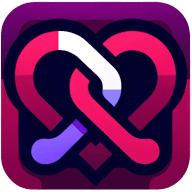In the digital age, dating platforms have become a popular way to meet new people and potentially find love. With so many options available, it can be challenging to determine which one is the best fit for you. This blog post aims to provide a comparative analysis of various dating platforms, examining their features, user base, and overall experience. We'll delve deep into the world of online dating, comparing and contrasting the most popular platforms to help you make an informed decision.
Understanding the Basics of Dating Platforms
The world of online dating is vast and varied. It ranges from websites dedicated to specific interests or demographics to apps that cater to casual dating or serious relationships. Each platform has its unique features and user base, which can significantly impact your online dating experience.
Take Tinder, for instance. It's a mobile app that popularized the swipe feature. Users swipe right to express interest and left to pass. It's simple, intuitive, and caters to a younger demographic looking for casual relationships.
On the other hand, eHarmony, a website, focuses on creating long-term relationships. It uses a comprehensive questionnaire to match users based on compatibility. It's a platform that appeals to an older demographic seeking serious relationships.
These are just two examples of the diverse range of dating platforms available. In the following sections, we'll delve deeper into the specifics of these and other popular platforms.
Analyzing User Demographics
User demographics play a crucial role in the success of your online dating experience. Different platforms attract different types of users. Understanding these demographics can help you choose a platform that aligns with your preferences.
Consider Bumble, a platform that empowers women by allowing them to make the first move. It attracts a user base that appreciates this dynamic, often leading to more respectful interactions.
Alternatively, Grindr is a dating app specifically for gay, bi, trans, and queer people. It provides a safe space for these communities to connect and find potential partners.
In contrast, platforms like Match.com have a broad user base. They cater to various age groups, interests, and relationship goals. This diversity can be a double-edged sword, providing a wide range of potential matches but also making it harder to find someone compatible.
Evaluating User Experience
User experience is another critical factor to consider. It encompasses everything from the platform's design and usability to its features and customer support.
For example, OkCupid boasts an intuitive design and a unique matching algorithm. It asks users a series of questions and calculates compatibility based on their answers. This approach provides a more personalized experience.
In contrast, Hinge promotes thoughtful conversations by prompting users to comment on specific parts of each other's profiles. It's a refreshing take on the standard messaging system found in most dating apps.
However, user experience isn't just about features. It's also about how the platform handles issues like user safety and privacy. Platforms like Coffee Meets Bagel put a premium on user safety by providing features like in-app video chat, so users don't have to share personal contact information.
Comparing Costs and Pricing Models
The cost of using a dating platform is another important consideration. Most platforms offer a mix of free and premium features.
Tinder, for example, is free to use but offers a premium subscription called Tinder Plus. It provides features like unlimited likes and the ability to undo a swipe.
On the other hand, platforms like eHarmony charge users for the ability to send messages and view photos. While this can be a deterrent for some, it also ensures that users are serious about finding a relationship.
It's important to consider your budget and how much you're willing to invest in your online dating experience. Remember, the most expensive platform isn't necessarily the best one for you.
Assessing Success Rates
Finally, it's worth considering the success rates of different dating platforms. While these can be difficult to measure accurately, some platforms do provide statistics.
For instance, eHarmony claims that four percent of all U.S. marriages start on their platform. Meanwhile, Tinder boasts that it has made over 30 billion matches to date.
However, success isn't just about numbers. It's also about the quality of the matches and the relationships that form. Some users might find success on a niche platform that caters to their specific interests or lifestyle, while others might prefer a platform with a broader user base.
Making the Final Decision
Choosing the right dating platform is a personal decision. It depends on your preferences, goals, and comfort level.
It's important to do your research and understand what each platform offers. Consider factors like user demographics, user experience, cost, and success rates.
Remember, there's no one-size-fits-all solution. What works for one person might not work for another. The key is to find a platform that aligns with your needs and expectations.
Wrapping Up Our Comparative Analysis of Dating Platforms
In conclusion, the world of online dating is diverse and dynamic. Each platform offers a unique experience, catering to different demographics and relationship goals. By understanding these differences, you can choose a platform that best suits your needs. Whether you're looking for a casual fling or a long-term relationship, there's a dating platform out there for you.

